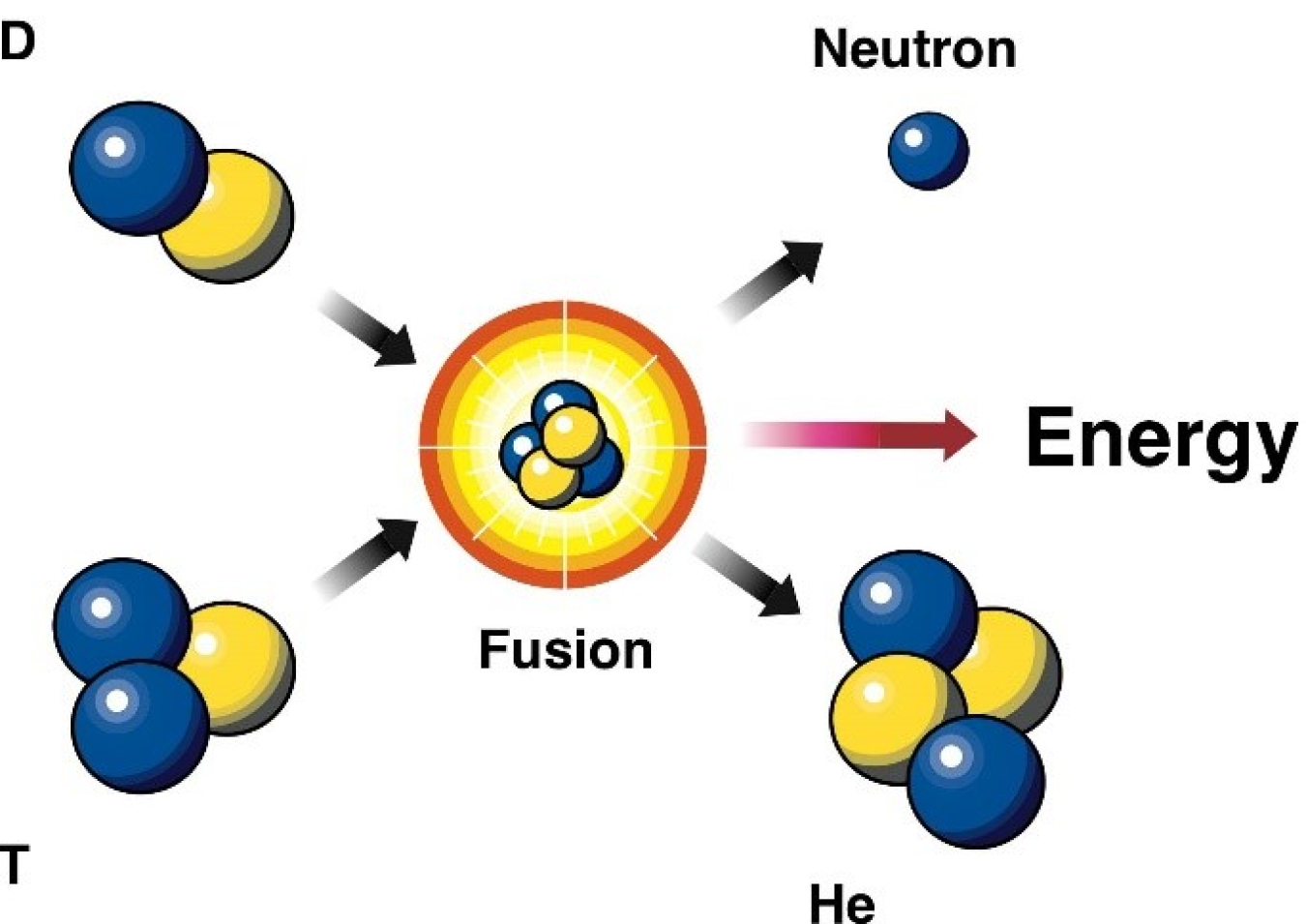
Fusion reactions power the Sun and other stars. In fusion, two light nuclei merge to form a single heavier nucleus. The process releases energy because the total mass of the resulting single nucleus is less than the mass of the two original nuclei. The leftover mass becomes energy. Einstein’s equation (E=mc2), which says in part that mass and energy can be converted into each other, explains why this process occurs. If scientists develop a way to harness energy from fusion in machines on Earth, it could be an important method of energy production.
Fusion can involve many different elements in the periodic table. However, researchers working on fusion energy applications are especially interested in deuterium-tritium (DT) fusion. DT fusion produces a neutron and a helium nucleus. In the process, it also releases much more energy than most fusion. In a potential future fusion power plant such as a tokamak or stellarator, neutrons from DT reactions would generate power for our use. Researchers focus on DT reactions both because they produce large amounts of energy and they occur at lower temperatures than other elements.
DOE Office of Science Contributions to Fusion Research
The Department of Energy Office of Science, Fusion Energy Sciences (FES) program seeks to develop a practical fusion energy source. To do so, FES partners with other Office of Science programs. They work with the Advanced Scientific Computing Research program to use scientific computing to advance fusion science as well as the Nuclear Physics program on nuclear reaction databases, generation of nuclear isotopes, and research in nucleosynthesis. FES also partners with the DOE’s National Nuclear Security Administration to pursue fundamental research on fusion in support of DOE’s nuclear stockpile stewardship mission.
Fusion Reaction Facts
- The ITER international fusion energy experiment will be scientists’ first attempt at creating a self-sustained fusion for long durations. “Burning plasmas” in ITER will be heated by the fusion reactions occurring in the plasma itself.
- Fusion experiments at the DOE’s National Ignition Facility at the Lawrence Livermore National Laboratory require 192 laser beams to align on a DT target smaller than a pea. This is like throwing a perfect strike in baseball from a pitcher’s mound 350 miles away from the plate.
Resources and Related Terms
- U.S. DOE Office of Science Fusion Energy Sciences program
- Science Up-Close: Developing a Cookbook for Efficient Fusion Energy
- Fusion Research Ignites Innovation
- Learn about joint DOE-private sector efforts to advance fusion power in these presentations from a June 2022 workshop.
Acknowledgements
Matthew Lanctot (U.S. DOE Office of Science)
Scientific terms can be confusing. DOE Explains offers straightforward explanations of key words and concepts in fundamental science. It also describes how these concepts apply to the work that the Department of Energy’s Office of Science conducts as it helps the United States excel in research across the scientific spectrum.

